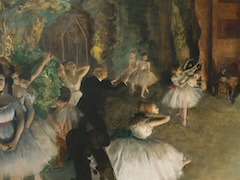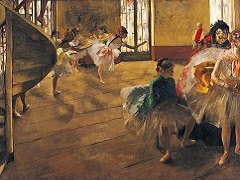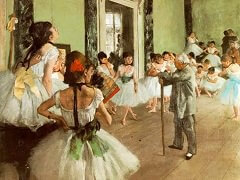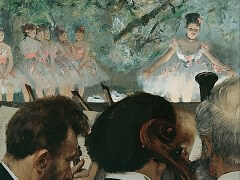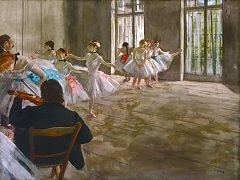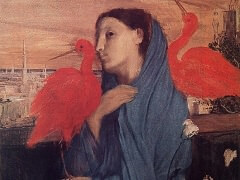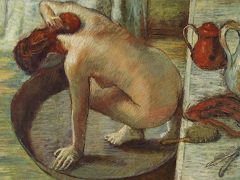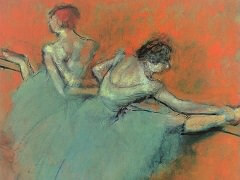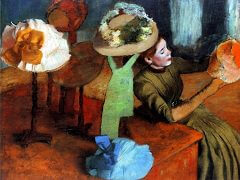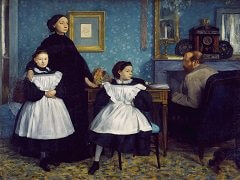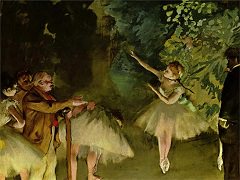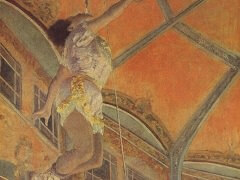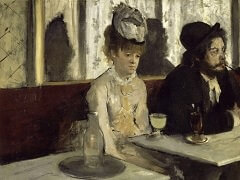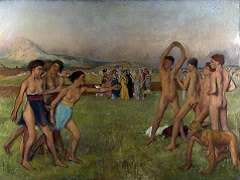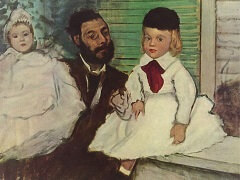Waiting, 1882 by Edgar Degas

Waitig is another example of Edgar Degas' originality in composing two figures into an arresting design. It is also another case of the story-telling picture without a story. A dancer in ballet costume and a woman in street dress are waiting, perhaps in the anteroom of the Opera. The woman draws aimless patterns with her umbrella on the parquet floor. The girl bends over, massaging her left ankle with her hand. With these simple means and by suggesting a blankness of space through the suppression of all detail, the artist has created an almost endless moment of boredom.
The composition is contrived to emphasize the mood. The weary, bending form of the dancer is opposed to the patient, more erect and yet slumping figure of the woman. Both figures are on the left side of the bench, the diagonal fine of which is paralleled in the floor boards, and again emptiness on one side is balanced by fullness on the other. The round, curving lines of the girl are played against the angular outline of the woman, the charm of color in her costume against the snuffy black of her companion's.
As Degas went further with pastel, he used it more frankly, allowing the strokes to show, using its sketchy lines to build a detail, or, as here, supply strong accents which gave the figures solidity and character.

